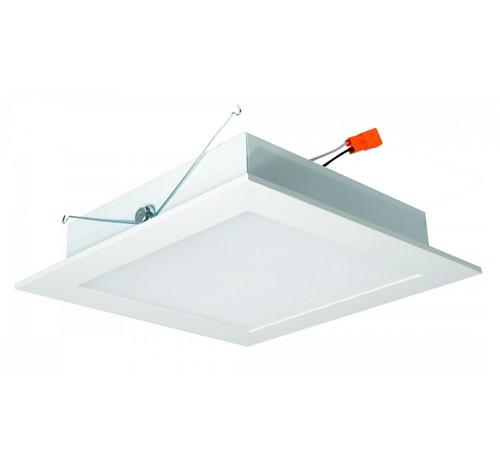
Exploring the Brilliance of Ceiling Recessed Lights: A Complete Overview
Share

In the realm of modern interior design, the quality and elegance of recessed ceiling lights have emerged as an indispensable lighting solution. Their seamless integration into architectural design elements, coupled with their versatility and efficiency, elevates them to be a hallmark of contemporary lighting aesthetics.
Understanding Recessed Ceiling Lights

Recessed ceiling lights, also known as can lights or downlights, are fixtures installed into the ceiling with the housing hidden within the ceiling itself. These lights differ from traditional pendant or chandelier lighting, as they are unobtrusive and offer a clean, minimalist appearance to the space. Their discrete nature makes them an ideal choice for various settings, from residential to commercial spaces.
The Evolution of LED Recessed Ceiling Lights
The advent of LED technology has revolutionized the landscape of recessed lighting. LED recessed ceiling lights have gained immense popularity due to their energy efficiency, extended lifespan, and flexibility in terms of color temperatures and designs. LED lights have significantly reduced energy consumption while offering superior illumination quality, making them a preferred choice for eco-conscious consumers and designers alike.
Understanding the Dynamics: Shadows and Brightness
Shadows wield an intriguing influence on the perception of a space when it comes to recessed lighting. Their interplay is governed by multiple factors, including the fixture's size, placement, and the direction of the light beam. Smaller fixtures positioned closer to the ceiling cast sharper, more defined shadows, while larger fixtures positioned farther from the ceiling produce softer, diffused shadows.
Balancing brightness is a critical consideration in harnessing the potential of recessed ceiling lights. Achieving equilibrium between the quantity of light and the desired ambiance is pivotal. Excessive illumination can create a harsh, overwhelming atmosphere, whereas inadequate light might evoke a somber and unwelcoming vibe.
Versatility Unveiled
One of the most captivating aspects of recessed lighting lies in its adaptability. These lights serve as chameleons, effortlessly transitioning between roles as ambient, task, or accent lighting. Their versatility enables them to accentuate artwork, provide task-specific illumination for activities like culinary endeavors or reading, and furnish overall room illumination.
Selecting the Perfect Fit
Navigating the realm of recessed lighting demands a careful consideration of various elements. The fixture's size and shape, the type of bulb employed, and the trajectory of the light beam constitute pivotal factors in the decision-making process. Additionally, the light's color temperature merits attention as it profoundly influences the ambiance of the space.
Factors Influencing Selection
Several critical factors come into play when selecting the ideal recessed ceiling lights for a particular setting:
- Fixture Type and Size: Recessed lights come in various sizes and shapes. The choice between smaller, more discreet fixtures and larger ones that make a design statement depends on the aesthetic and functional requirements of the space.
- LED Technology: Opting for LED recessed ceiling lights offers not only energy efficiency but also versatility in color temperatures. Adjustable color temperatures allow customization to suit different moods or activities within a room.
- Direction of Light: The directionality of the light beam profoundly influences the ambiance and functionality of a space. Adjustable fixtures enable users to direct light precisely, minimizing shadows and accentuating specific areas as desired.
Advantages of Recessed Ceiling Lights
- Aesthetic Appeal: Recessed ceiling lights contribute to a clean, modern aesthetic, enhancing the overall ambiance of a room without overpowering the space.
- Versatility: Their versatility lies in the ability to be used for various lighting purposes, including ambient, task, or accent lighting, depending on the placement and type of fixture used.
- Space Maximization: By being embedded within the ceiling, they save valuable space compared to traditional hanging or wall-mounted fixtures.
- Directional Lighting: Adjustable options allow for directing light precisely where needed, contributing to better functionality and visual appeal.
- Energy Efficiency: LED variants significantly reduce energy consumption, resulting in cost savings and reduced environmental impact.
Types of Recessed Ceiling Lights
- Baffle Trim Lights: Featuring a ribbed interior, these reduce glare and soften the light emitted, making them ideal for general illumination in living spaces.
- Adjustable Gimbal Lights: Designed for flexibility, these allow users to adjust the direction of the light beam, making them suitable for highlighting specific areas or artwork.
- Wall Wash Lights: These fixtures distribute light over a wide area, often used to accentuate walls or large surfaces, creating a sense of spaciousness.
- Pinhole Trim Lights: With a minimalistic design, these focus on providing a concentrated beam of light, perfect for highlighting objects or architectural features.
Design Trends and Integration
The versatility of recessed ceiling lights extends beyond functionality, playing a pivotal role in interior design trends. Integrated into smart home systems, these lights offer customizable settings for different moods and occasions. Contemporary designs often incorporate recessed lights in innovative ways, such as using them as architectural elements or integrating them with decorative ceiling features.
Installation and Considerations
Installing recessed ceiling lights requires careful planning to achieve the desired lighting effect while ensuring structural integrity. Factors like ceiling height, wiring, insulation, and the type of fixture impact the installation process. It's crucial to consult a professional electrician or contractor to ensure proper installation and compliance with safety regulations.
Considerations for choosing the right recessed ceiling lights include:
- Ceiling Type: Different ceiling materials may require specific mounting methods or additional accessories for installation.
- Spacing and Layout: Proper spacing between fixtures is essential to avoid over- or under-lighting a space. A well-thought-out layout ensures uniform illumination.
- Dimming and Controls: Incorporating dimmer switches or smart controls provides flexibility in adjusting lighting levels, enhancing ambiance, and reducing energy consumption.
Maintenance and Upkeep
LED recessed ceiling lights boast an impressive lifespan compared to conventional lighting options. However, periodic maintenance ensures optimal performance and longevity. Dusting fixtures regularly and checking for any signs of wear or malfunctioning components can prevent potential issues and extend the lifespan of these fixtures.
